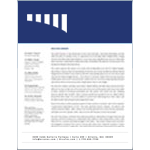
Energy and Environment News
January 11, 2016
Top Stories
Oil Outlook. The global benchmark for oil prices (i.e., Brent) fell to $31.48 today, the lowest level since April 2004. Several prominent banking and investment firms have warned that prices could slide to $20 a barrel, particularly in light of risks posed to commodity prices should China further devalue its currency, the risk of insufficient storage space, and continued increases in global production volumes. FT
Oil. The Saudi Arabian government announced that it is considering an initial public offering for its state-owned oil company Saudi Aramco, leading markets to speculate about its financial potential given that it pumps more one-tenth of the world’s crude oil and would become the world’s first company valued at well over one trillion dollars. Spencer Jakab of the Wall Street Journal argues that investors should be wary of such an offering, noting that historical precedent holds that countries are apt to “rewrite the rules” of such privatization efforts when oil prices are high. WSJ
Climate Change. Vinod Thomas of the Brookings Institute argues that the world’s institutions have so far failed to price the environmental impacts of climate change into other measures of the global economy, leading to the failed assumption that growth “can continue indefinitely without taking climate action.” As an example, Thomas notes that a country can improve its ranking in the World Bank’s “ease of doing business” index by lowering its environmental protections — illustrating how the economics, politics, and political spheres have all failed to account for the costs of environmental impacts. Brookings
Oil. Nick Butler of the Financial Times discusses Isis’ oil strategy in light of the collapse of oil prices and the group’s broader political strategy in the Middle East. Butler notes that while the group’s “quasi national oil enterprise” is unlikely to continue, the group will likely escalate its strategy of attacking oil installations to weaken their opponents, discouraging new investment in politically fraught states such as Libya as a means of undermining existing regimes and demonstrating its power. FT